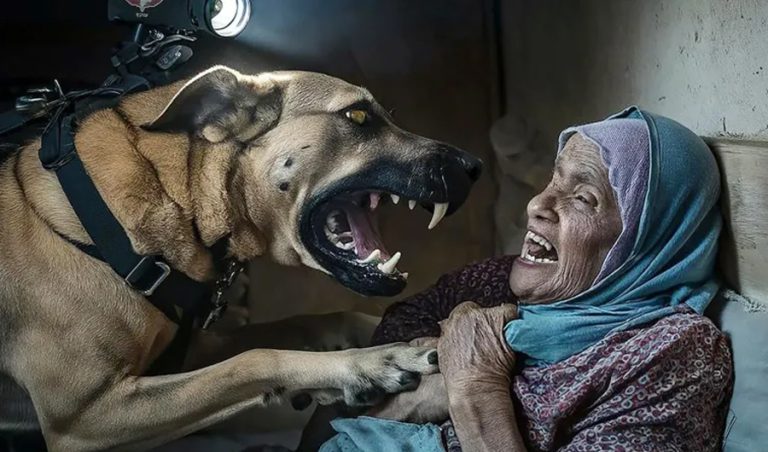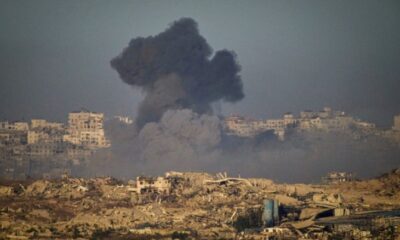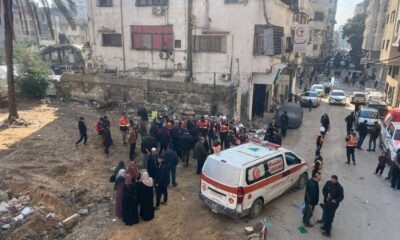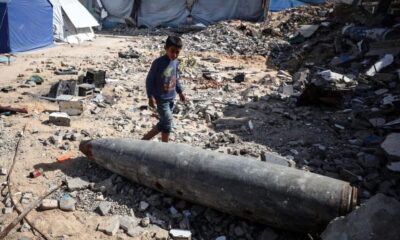Breaking News
Documenting through images: A specter haunting Israel and shattering its narrative

GAZA,(Palestine Foundation Information Center) From the earliest hours of the Al-Aqsa Flood operation, and from the moment Israel realized that its prestige, stability, and even its very existence were on the verge of collapse, it quickly decided to wage a bloody war—believing it could restore its lost standing and reestablish the deterrence equation broken by the resistance that morning. However, what Israel failed to anticipate was that this war would drag on, and that its crimes would be documented in sound and image, placing it in a predicament with consequences potentially graver than the “Al-Aqsa Flood” itself—perhaps with a swifter impact on undermining its very foundations.
For the Israeli leadership, which mobilized all its forces with unprecedented American support, it seemed like a round of extreme violence that would yield quick results. Thus, they decided to carry out a massacre in Gaza, assuming the world would not pay attention to its brutality, especially as public opinion still leaned toward the Israeli narrative. But Gaza surprised the enemy with its steadfastness and the courage of its resistance. This drove the occupation to increase its savagery in the belief that it could achieve a victory—without which it could not emerge from the war. Yet it was soon shocked to find that the element of surprise it thought would last had faded, and it was now exposed on the global stage, committing atrocities against humanity in Gaza—atrocities laid bare by digital documentation.
Israel was stunned to discover that its initial lie—that Hamas had committed horrific crimes against civilians—was no longer the dominant narrative in global media. Instead, attention shifted to the bombing of the Al-Ahli Baptist Hospital, which had sheltered patients and refugees; the massacres in Mawasi Khan Yunis and the Jabalia refugee camp; the leveling of entire cities; the screams of women and children; the images of severed limbs; and mothers searching for their children among the rubble. All of these became staple imagery for media outlets, even those that had initially embraced the Israeli narrative.
Failed Attempts
Faced with this crisis, Israel had no option but to intensify its false propaganda: fabricating stories, claiming the existence of tunnels beneath the Al-Shifa Medical Complex, and broadcasting images of empty rooms to suggest they had been used by the resistance to detain and torture prisoners. At times, it denied its crimes, only to later admit them. Daily military reports by army spokespeople, press conferences by government officials, and exclusive media coverage promoting the Israeli narrative followed—a massive mobilization to fix the image it had fabricated since the start of the war. But the damage was already beyond repair. Images of Israel’s victims—women and children—circulated through the streets of America and Europe, and Israel’s voice was drowned out by cries condemning its crimes in every forum.
Documented scenes of soldiers torturing prisoners, laughing over the bodies of martyrs, boasting about killing children, and committing massacres at aid distribution sites prompted Gideon Levy, a columnist for Haaretz, to write on June 29: “Is Israel committing genocide in Gaza? The testimonies and images coming out of Gaza leave little room for doubt.”
Even Thomas Friedman, the well-known pro-Israel columnist for The New York Times, no longer believed the Israeli narrative. In an opinion piece published on May 9 and addressed to U.S. President Joe Biden, he stressed, “This Israeli government is not our ally,” clarifying that it “is acting in ways that threaten America’s fundamental interests in the region.”
The Narrative Has Become Gazan
Journalist and political analyst Jassem Al-Ghazzawi writes, “In the past, the Israeli narrative was shielded behind newsroom doors and the weight of Western guilt. But the smartphone shattered those doors. What we see now is no longer what Israel tells us—it is what Gaza shows us.”
Al-Ghazzawi added in an article published by Al Jazeera: “The platforms that carry these images—TikTok, WhatsApp, Instagram, X—do not prioritize context; they prioritize virality. While the older generation may avert their gaze, the younger generation remains glued to the stream of suffering, captivated by every pixel, every siren, every moment of destruction.”
Global public opinion is boiling—and this works against Israel’s interests, Al-Ghazzawi continues. Israel is no longer just at war with its neighbors—it is at war with the lens itself.
A Moral Dilemma
He observes that the psychological impact of this visual war is resonating deeply within Israeli society, where for decades, Israelis saw themselves as global narrators of suffering—not subjects of international scrutiny. But now, with the flood of footage showing Israeli army bombings, flattened neighborhoods in Gaza, and emaciated children across every platform, many Israelis face a growing moral dilemma.
Al-Ghazzawi explains that there is rising anxiety, even among centrists, that these vivid images are undermining Israel’s moral standing. For the first time, public discourse within Israeli society includes a fear of the mirror: of what the world now sees—and what Israelis themselves are being forced to confront.
On the international stage, the impact has been even more destabilizing for Israel’s diplomatic standing. Israel’s traditional allies—once unconditionally supportive—now face mounting popular pressure from citizens who no longer consume official narratives, but instead follow TikTok livestreams and Instagram reels.
Political Crisis and Legal Pursuit
The journalist notes that members of parliaments across Europe and North America are now openly questioning arms shipments, trade deals, and diplomatic support—not because they’ve been officially briefed on Israel’s war crimes, but because their inboxes are flooded with images of dismembered children and the starving. He adds: “The battlefield has extended to parliaments, universities, city councils, and newsrooms. This is the backlash to a war Israel cannot win through brute force.”
Behind closed doors, Israeli military leadership is now no longer concerned only with public relations—it is increasingly worried about legal prosecution. The command has warned soldiers against taking selfies and filming themselves demolishing Palestinian homes, cautioning that such material is now being collected as evidence by international human rights organizations.
Activists have already used videos and images from social media to target Israeli soldiers abroad. In several cases, Israeli citizens have been forced to flee countries they were visiting after complaints were filed against them for war crimes.
Internationally Hunted
Coinciding with Israel’s resumption of its genocidal war last March, the International Center of Justice for Palestinians (ICJP) launched the Global 195 initiative to pursue Israelis involved in war crimes against the Palestinian people in Gaza.
The center’s director, Tayab Ali, stated that during the months of war, the center has been gathering evidence on Israeli war crimes in Gaza, noting that Global 195 possesses a large archive of material documented according to British criminal standards.
He added that this evidence provides a clear and damning picture of the crimes committed by Israel in Gaza, prompting the center to launch the second phase of accountability through the Global 195 Initiative.
As part of this initiative, an international legal coalition was formed under the umbrella of Global 195 to ensure worldwide prosecution of Israelis and dual nationals involved in Gaza war crimes. The coalition is building a global accountability network spanning four continents, utilizing both national and international legal mechanisms to pursue perpetrators of war crimes in Gaza—aiming to issue arrest warrants and initiate legal proceedings.
The initiative targets Israeli occupation soldiers, senior officers, and political officials accused of violating international law. It has garnered support from lawyers and civil society organizations in the UK, Canada, Turkey, Norway, Malaysia, and Bosnia and Herzegovina, boosting its efforts to achieve legal accountability on a global scale.
In the era of smartphones, the occupation is no longer just visible—it is now indictable and hunted. So much so that the United Nations Special Rapporteur on Human Rights in the Occupied Palestinian Territories, Francesca Albanese, recently questioned several European countries about why they allowed Israeli Prime Minister Benjamin Netanyahu—wanted by the International Criminal Court—to transit through their airspace.
These inquiries targeted Italy, France, and Greece, all of which permitted Netanyahu’s passage despite the international legal proceedings against him.









